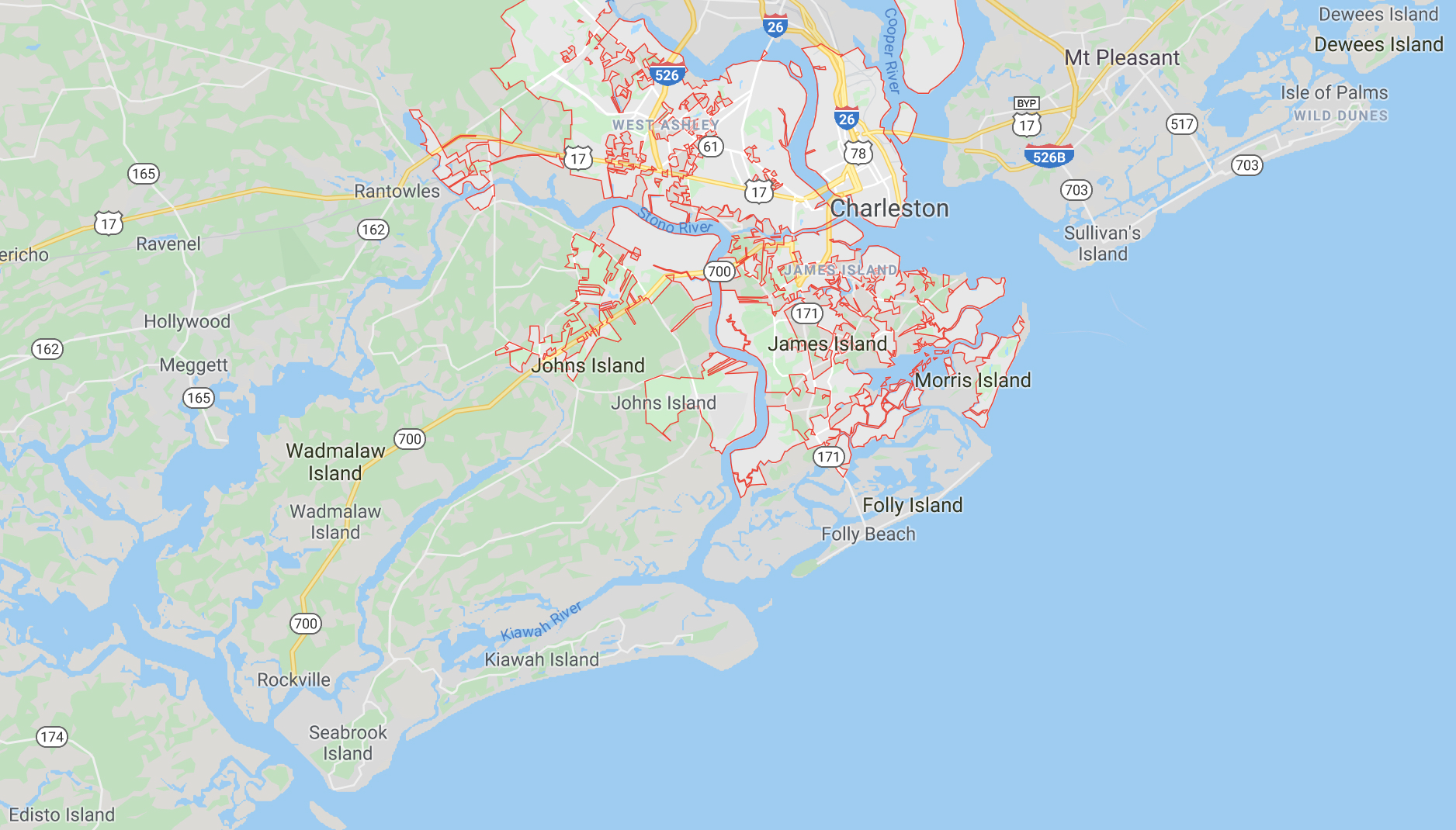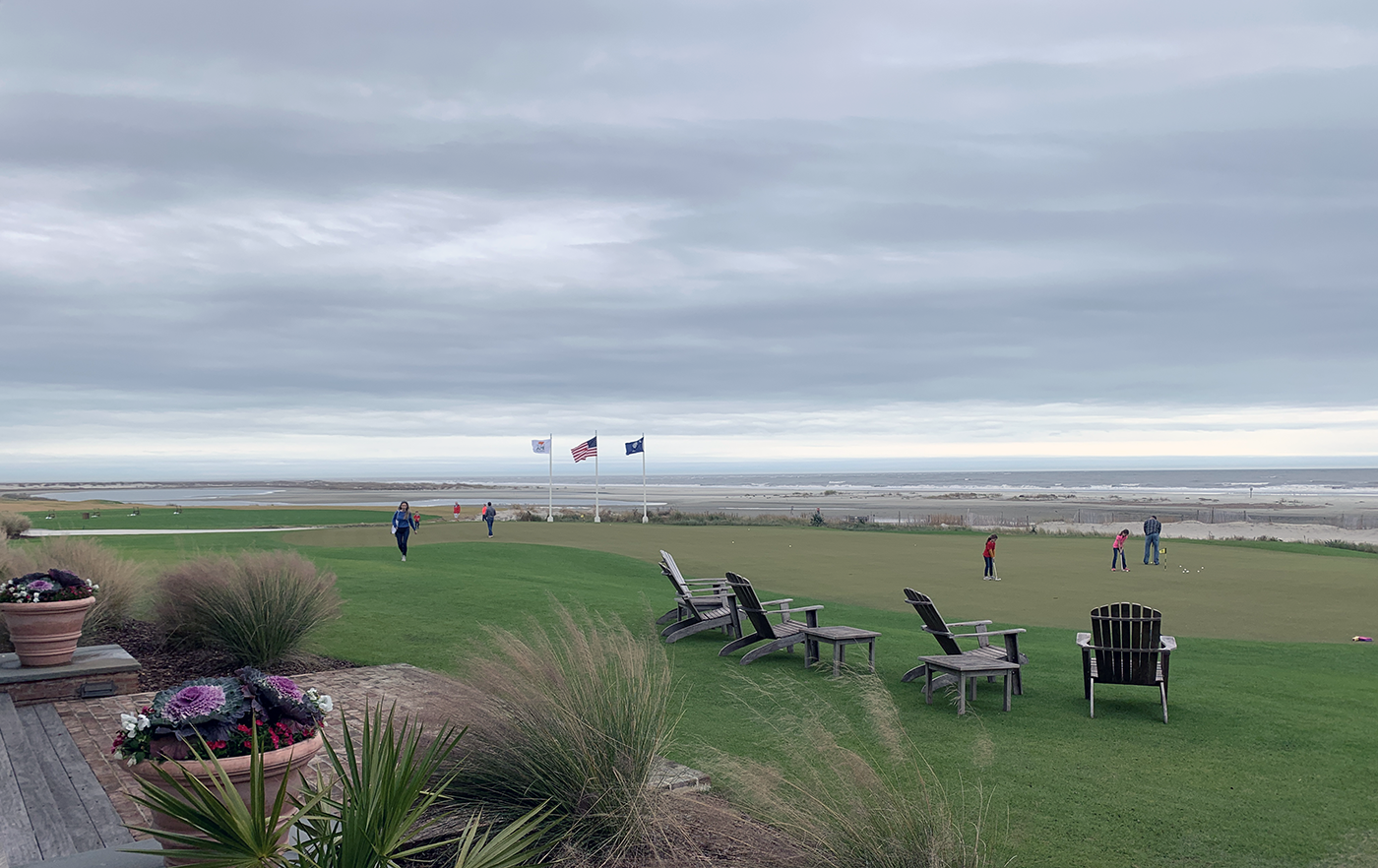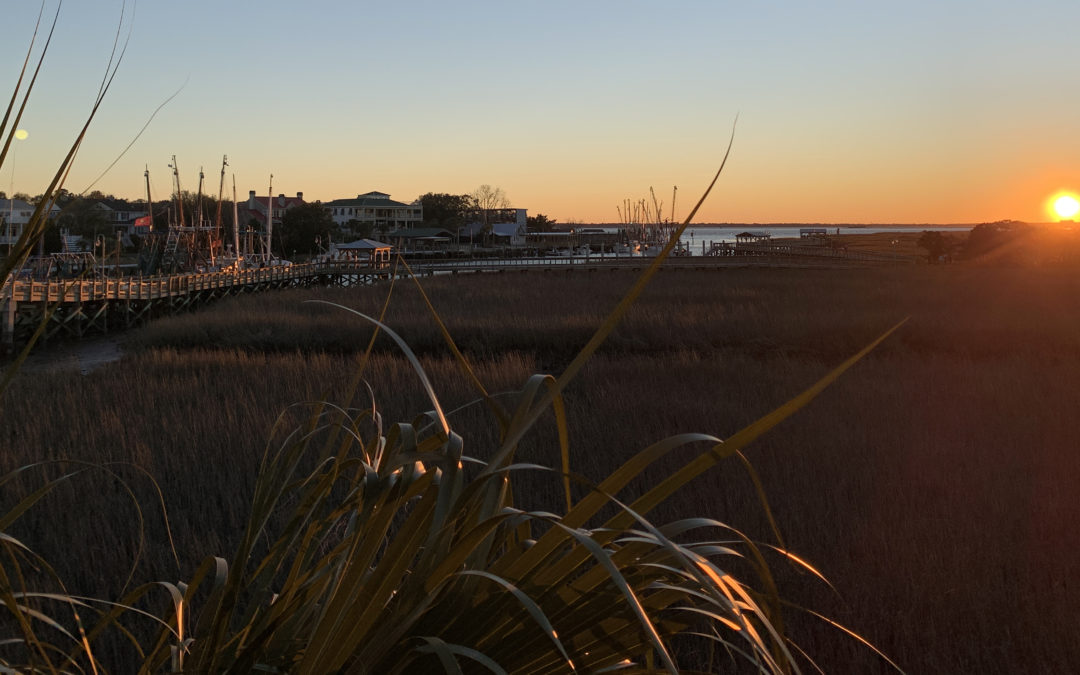I have loved Charleston from my first visits as a child. The beautiful antebellum homes, the dank smell of the marsh at ebb tide, the dunes alive with waving sea oats and grasses … Back in the day, the Market wasn’t the charming shopping mecca beloved of tourists, but a stark reminder of the trade in human lives. And the restaurant scene considerably more limited. But Charleston remains eternal, deeply familiar despite my years of absence.
My self-described “Yankee” friend had never visited the city, and invited me to join her for a New Year’s adventure. Knowing I’d lived in Charleston part-time for several years, she looked forward to seeing this part of the country for herself. I love the surrounding islands as much as the city, so we made a plan that captured a taste of everything — yet allowed time for serendipity.
Three things will help you more fully appreciate Charleston —
- a willingness to try unfamiliar food — without regard to carbs, fat, sugar, pork…
- an appreciation of history — even the dark parts
- a rental car
SUNDAY, DEC 29 — cloudy, mostly-light rain, low 70s
Arriving before 2pm, we’d saved ourselves for Leon’s on upper King — known for its oysters and fried chicken. Southern fried chicken may live in a class by itself, but we came for the oysters. Word of Leon’s promised a chargrilled option that rivaled New Orleans’ now-closed Drago’s — and while the oysters were good, they weren’t Drago’s. The fried oysters and shrimp, however: yum! A not-too-heavy batter, fried up crispy and brown. The cold and vinegary black-eyed pea salad proved a delightful surprise, and I’d order the hush puppies again (though I was dismayed to learn that hush puppies and cornbread are now à la carte most places). Before checking in at The Meeting Street Inn (not recommended), we drove around the rainy streets South of Broad to check out the beautiful old homes, the Battery, Rainbow Row, the old ballast-stone lanes around Adger’s Wharf… Still a bit full from lunch, we split a sandwich at Toast — a Lowcountry diner that serves breakfast anytime.
MONDAY, DEC 30 — cloudy, intermittent rain, mid 60s
Most people understand Charleston only as the peninsula lying at the confluence of the Ashley and Cooper Rivers. But the community extends across a number of islands separated by rivers and creeks that wind through the savannas — waterways that once fed and moved the crops of Sea Island cotton, indigo, and Carolina rice grown on plantations of every size along the Gullah/Geechee Corridor. Today, residential development and all manner of retail continue to spread over those old fields — but a few pockets of Lowcountry beauty remain.
 A short walk through the Market (picking up Benne Wafers & Key Lime cookies), we stopped at Callie’s Hot Little Biscuit for fresh-from-the-oven minis to much on our trip across the Ashley River. While Highway 17 may be shorter and more direct, the high and curving Route 30 offers a sweeping view across the harbor. Traveling across James Island, then John’s Island, we continued along Maybank Highway until the road ended on Wadmalaw* Island in the tiny hamlet of Rockville — established in 1784, dense with moss-draped live oaks shading sandy lanes, and home to just a handful of clapboard houses built in Lowcountry style. No restaurants, no retail — just a glimpse of life at the pace of the slow-moving river.
A short walk through the Market (picking up Benne Wafers & Key Lime cookies), we stopped at Callie’s Hot Little Biscuit for fresh-from-the-oven minis to much on our trip across the Ashley River. While Highway 17 may be shorter and more direct, the high and curving Route 30 offers a sweeping view across the harbor. Traveling across James Island, then John’s Island, we continued along Maybank Highway until the road ended on Wadmalaw* Island in the tiny hamlet of Rockville — established in 1784, dense with moss-draped live oaks shading sandy lanes, and home to just a handful of clapboard houses built in Lowcountry style. No restaurants, no retail — just a glimpse of life at the pace of the slow-moving river.
Returning the way we came, we stopped in at Charleston Tea Plantation — the only tea plantation in North America, originally an experimental site for Lipton and now owned by Bigelow. The shop is nice (with free tea) and the tour short, but the site offers a pleasant stop before heading back up the highway to see the sprawling Angel Oak — a massive live oak said to be the oldest living thing east of the Mississippi. 
The drive back into town took 30-45 minutes, so we were ready for a sundowner and dessert. In Charleston, dessert menus aren’t always printed — so we made several stops before finding a small table upstairs in the bar at Husk — a small brick building next door to the beautiful old mansion that houses the acclaimed restaurant. The Pecan Tart, surprisingly and delightfully paired with housemade orange bourbon ice cream, bears little resemblance to the well-loved pecan pies known across the South. For one thing: it’s served as a bar, with chopped pecans layered thickly atop a salted caramel that’s nothing like the sugary goo that fills most pies. We ordered the suggested pairings: a Kentucky bourbon and a European Madera. A stellar way to end a long and memorable day.
* Named after Native American communities that settled this area hundreds of years before the wealthy planters — who would become the Lords Proprietor of the area — arrived from England.
TUESDAY, DEC 31 — sunny, low 60s, gorgeous
New Year’s Eve. We hadn’t wanted to spend the evening at a big-ticket celebration, so opted to book a last-minute 5:45pm reservation at 82 Queen that we might or might not cancel. We’d planned a visit to McLeod Plantation (there’s an app!), the 37-acre remnant of what had once been a more than 1700-acre Sea Island cotton plantation that’s now part of Charleston County Parks. (The sweep of Route 30 we’d driven the day before actually crosses what had been McLeod land.) The 45-minute tours do a great job sharing the stories of both the McLeod family and the people they had enslaved — an emphasis perhaps more balanced than the stories told at other plantations. On the tour, we met a Washington, DC-based historian who had returned home to Charleston for the holiday. Her recommendation for lunch: Gillie’s Sea/Soul Food, just a couple of miles down the road.
Oh my! Gillie’s offered the perfect opportunity to introduce my Yankee friend to the wonderful smorgasbord of Lowcountry fare. The kitchen kindly split our Shrimp & Grits which we complemented with a “vegetable plate” —
- mac & cheese — the real kind
- collards — simmered with ham hock, and none of the hot red pepper people keep adding to this classic
- lima beans — big and white, slow-cooked with ham (and I’m pretty sure some bacon fat)
- fried okra — small slices, lightly battered and perfectly fried, they taste like a treat
- a square of sweet cakey cornbread
While we waited, my friend overheard a local woman telling her out-of-town guests about taking them to Sullivan’s Island. “What’s on Sullivan’s Island?” my friend asked. A quick search revealed a bit of history I’d never heard: that the island’s Fort Moultrie served as a disembarkation and quarantine site for as many as 20-40% of the 400,000 enslaved people brought to the British colonies and successor states.
There is no suitable memorial, or plaque, or wreath or wall, or park or skyscraper lobby. There’s no 300-foot tower, there’s no small bench by the road.
Toni Morrison, 1989
In 2008, the Toni Morrison Society dedicated a black steel bench at a corner of the park overlooking the Intracoastal Waterway. The next year, the National Park Service placed a commemorative marker describing the Sullivan’s Island Quarantine Station, and set aside part of its small museum to tell the story of the slave trade in the area. More well-known is Fort Moultrie’s defensive military role — from the Revolutionary War through World War II. Climbing to the top of the commandant’s tower, we could make out Fort Sumter a mile away across the mouth of Charleston harbor.
Heading back to town, we decided to cancel our fancy (if early) dinner and watch the sun set across the water. Shem Creek, long an unloading point for fishermen and shrimpers, offered a nice southwest-facing option. We settled into a window table at Vickery’s for a beautiful display of color as the year faded (photo above).
WEDNESDAY, JAN 1 — sunny, low 60s, but an early departure
With miles to travel and flights to catch, we enjoyed our last chance for a Lowcountry breakfast at Eli’s Table: eggs and bacon with cheesy grits, a big Southern biscuit with berry coulis, and rich dark coffee. A short stop at Jestine’s Kitchen for take-home Hoppin’ John and collards — the classic Southern New Year’s Day meal — and we hit the road, already planning a return.


